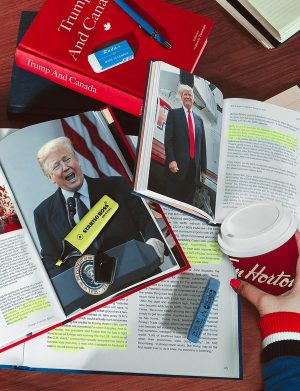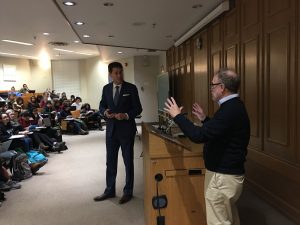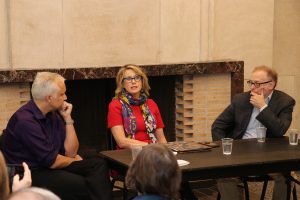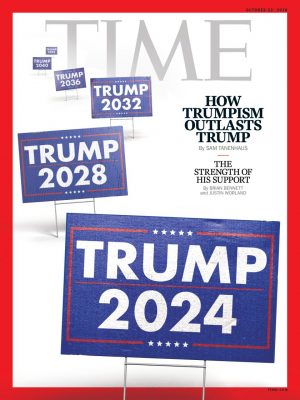
When USMC visiting professor Sam Tanenhaus realized that many of his University of Toronto students knew people who had voted to elect Donald Trump president of the United States, he said to them, “Right now, you have more to tell me than the newsroom of The New York Times.” This moment led him to scrap a detailed traditional syllabus he had prepared for a course titled “Trump and the Media,” and to move in a new direction. He would informally rename the course to match its novel approach: “Trump in Real Time.”
This all comes from the pages of a recent issue of Vanity Fair. The magazine sent writer Joel Stein to attend Tanenhaus’s class and report on how the journalist handled the constantly shifting curriculum. Stein came away impressed, not least by the students themselves:
These students are from the first generation steeped in reality TV, Twitter, memes, and GIFs. They are immune to Trump Shock, a trait which allows them to coolly analyze the first president to grab the levers of those media.

The class of 180 (140 of whom were women, Stein notes) demonstrated a special adeptness with the social media tools Trump uses to circumvent traditional avenues of public discourse, and Tanenhaus “[preferred] to ask questions rather than opine, and impressively [canvassed] the class’s expertise.” USMC Principal Randy Boyagoda says to Stein, “the class is inspiring students to become journalists.” Stein elaborates: “At least half a dozen … say they have put aside law-school applications.”
This is not the first major media attention “Trump and the Media” has elicited. In fact, in an ironic turn, American and Canadian media alike paid a great deal of attention to Tanenhaus throughout the fall term for his agile approach to teaching U of T students about the ways and means of the divisive American president.

You can listen to Tanenhaus discuss his reasons for coming to Toronto to teach the course in this CBC Radio clip from September, or watch him in this classroom in this video clip from CBC’s The National before the U.S. mid-term elections. An October Globe and Mail article detailed Tanenhaus’s experiences of getting in touch via text message with Steve Bannon, a major player in Trump’s rise to power. In November, a reporter for Vice News found students making plans to pursue journalism careers, with many course-takers longing for longer class times than the customary two hours. At the end of that month, reporter Steve Paikin of TVO’s The Agenda visited the final meeting of Tanenhaus’s class to discuss Canadian and American politics, the future of the journalism industry and what today’s careers in journalism look like. In December, Tanenhaus joined a PEN Canada panel in Charbonnel Lounge on the St. Michael’s campus to discuss the murder of Saudi dissident journalist Jamal Khashoggi and its implications for journalists around the world.

Tanenhaus has maintained a busy freelance journalism schedule in addition to his teaching commitments. One of these projects became an October cover story for Time magazine on the attempts of some Trump supporters to turn the president’s ad-hoc declamations and public statements into a durable political movement.
The former New York Times editor and historian is currently working on a biography of American conservative icon William F. Buckley, Jr., one more pursuit to add to his freelance assignments and occasional teaching load. Speaking of teaching, when reached by email, Tanenhaus had this to say about the dozens of students who filled up his courses:
Without a doubt the highlight of my experience at St. Mike’s was spending time with great students. [They were] engaged, eager to talk and to listen, extremely well informed, scary smart, and in some cases, brilliantly gifted. Anyone harboring worried thoughts about millennials should spend a couple of hours talking with U of T undergrads, and the fog will almost instantly lift.
It is to our great benefit that even though Tanenhaus concluded his teaching at St. Mike’s in December, those students are still around.
